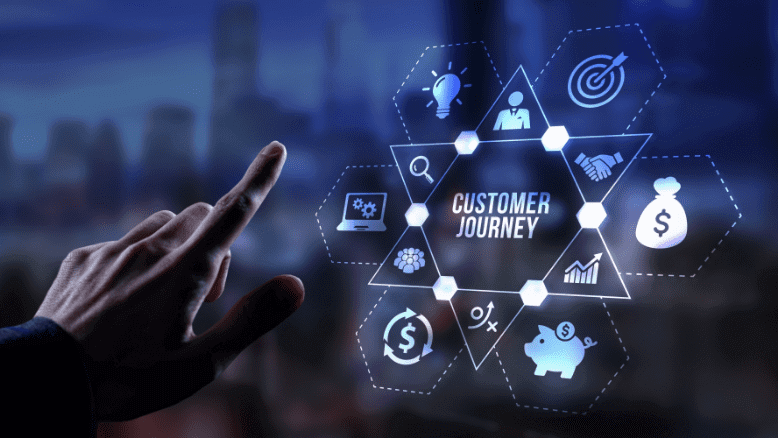Why Are CPOs Increasingly Looking to the Cost-to-Serve Model to Enable Profitable Growth?

We are living in a disrupted globalized world and as a Chief Procurement Officer (CPO) managing a profitable procurement department, you’re navigating through numerous supply chain disruptions over the past five years.
Events such as Covid-19, the Ukraine War, the Suez Canal blockage, and the recent Israel-Hamas conflict have posed significant challenges for businesses, impacting their financial health. Cutting costs remains more crucial than ever, but it’s also more complex.
Traditionally, supply chain management focused on total landed costs to calculate the overall expenses of making a product.
However, this approach is now recognized as inadequate.
Costs go beyond just warehouses—they affect everything from delivering goods to customers, which can greatly influence profitability.
While companies used to prioritize reducing procurement costs, there’s now a growing awareness of the need to take a broader view.
Understanding costs in detail is essential to ensure that increased sales translate into higher profits.
To achieve this, businesses need a thorough understanding of their supply chain and how it serves their customers. This is where cost-to-serve analysis becomes invaluable
What is the Cost-to-Serve Model?
The Cost to Serve model is basically a way of figuring out all the costs involved in getting products or services to customers.
It’s not just about the obvious costs like making and delivering stuff.
It also covers things like marketing, sales, customer service, and other behind-the-scenes expenses.
This method helps businesses plan their finances better and make smarter decisions.
When companies use Cost to Serve models well, they can really see how profitable each product, customer, sales channel, and market segment is.
This helps them decide on prices, what products to offer, which customers to focus on, and where to put their resources.
The Cost-to-Serve model is built on the foundation of digital transformation, leveraging advanced technologies to cover every aspect of the supply chain journey.
This includes procurement, manufacturing, distribution, and customer service.
By integrating these elements, the model ensures that all cost drivers are accounted for, providing a clear picture of the true cost of servicing each customer or market segment.
Why Does the Cost-to-Serve Model Make sense?
Enhanced Visibility and Control
The Cost-to-Serve model offers enhanced visibility into the cost structure of the supply chain.
Granular insight allows CPOs to identify high-cost areas and implement targeted strategies to reduce expenses.
With a clear understanding of cost drivers, businesses can better control their spending and improve profitability.
Data-Driven Decision Making
By leveraging detailed cost data, the Cost-to-Serve model enables CPOs to make informed decisions about resource allocation.
For instance, identifying the most profitable customer segments allows companies to focus their efforts on high-margin areas, optimizing overall profitability.
Customer-Centric Strategies
Understanding the costs associated with the entire customer journey allows companies to tailor their services to meet customer needs more effectively.
This customer-centric approach enhances satisfaction and ensures that services are delivered cost-efficiently, contributing to profitable growth.
Leveraging Digital Transformation and SaaS Solutions
Digital transformation plays a pivotal role in the successful implementation of the cost-to-serve model.
Modern البرمدة كخدمة (Software as a Service) solutions provide the advanced analytics and real-time data processing capabilities necessary for accurate cost-to-serve analysis.
These platforms automate many aspects of the supply chain journey, reducing manual effort and minimizing errors.
Data can make or break a Cost to Serve initiative
Data Sanity
Getting the data right is crucial and hence the more detailed and specific the cost data, the better the Cost-to-Serve model will be at giving insights.
A common misconception floating around is that basic data like order numbers, order details, quantities per order, picking methods, shipping types, and costs would be straightforward.
But as per the findings of a study, even in big companies with advanced ERP systems, getting good data sets is tough and often inconsistent.
Data Updates
The Cost-to-Serve model becomes more dynamic and responsive with frequent and timely data updates.
With constant changes, it’s crucial for end-users to have up-to-date information available precisely when decisions need to be made.
Updates too soon and too frequent would be impractical.
Data Integration
For a cost-to-serve model to pack a punch there needs to be a central data warehouse or an intelligent SaaS product like Moglix that can pull relevant data from multiple sources like WMS (warehouse management system), CRM (customer relationship management), and TMS (transportation management system).
Knowing exactly where the data lives and collaborating closely with end-users to figure out what’s essential for the model to guide decision-making effectively.
What do we know? What have we learnt?
The Cost to Serve model empowers supply chain leaders with timely insights to make informed decisions.
By providing a holistic view of the entire supply chain, this approach prevents unforeseen pitfalls that can disrupt profitability and team morale.
It’s about sticking to basics, staying proactive and maintaining a clear path towards sustainable success in a dynamic business environment.
Moglix for almost a decade now has been enabling organizations in India and in the UAE to achieve end to end procurement & supply chain efficiency.
Its integrated procurement البرمدة كخدمة solution, automated workflows, and catalog-based buying solutions, combines with its state-of-the-art physical warehouse network to revolutionize your business’s approach to procurement.

